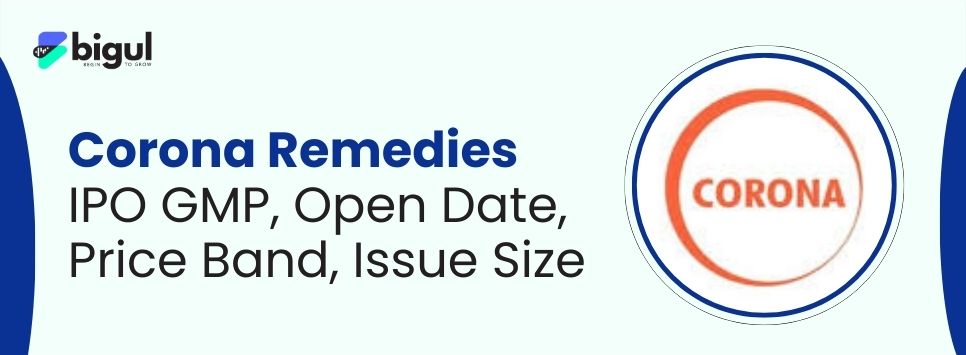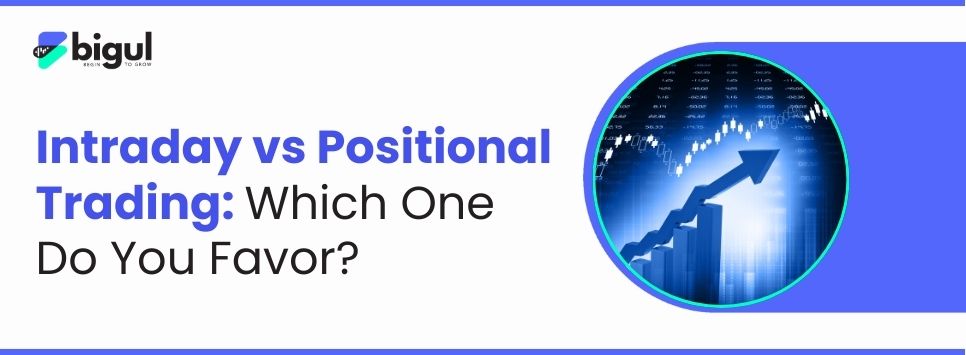Intraday and Positional Trading are essentially different types of trading adopted by traders with different goals and risk capacity. Knowing the basic differences, pros and cons, etc. can provide information that can help traders choose a best fit as per their financial goals and lifestyle.
In this article, we will offer a comprehensive analysis for intraday trading vs. positional trading, with regards to the mechanics involved, risks, benefits, and which may be a better possibility for you.
What Is Intraday Trading?
Performing both purchase and sell operations in a single trading session is known as intraday trading, or day trading. This fast-paced approach is intended to capitalize on minute price changes that occur throughout the day. Traders will take positions in the morning and are out of them by the market's closing on the same day.
The essence in this case is that intraday traders never hold positions overnight. They take advantage of price movements on the same day of trading and seek to earn profit by their timing. Since it depends on daily market swings and the speed at which the market moves within a day, intraday trading is usually very risky.
What Is the Process of Intraday Trading?
Technical analysis to understand price activity on a very short-term basis, scanning price charts, volumes, and other market conditions (including RSI, MACD, and Bollinger Bands), are all common intraday trading elements Most intraday trade execution strategy is: going long when the price rises and short when the price falls.
Major Advantages of Intraday Trading:
• Rapid Profits: Traders are able to gain profits within hours or even minutes by profiting from minute price movements.
• No Overnight Exposure: Because positions are closed prior to market close, there is no overnight exposure to any news or events overnight.
• Leverage: Brokers offer leverage to take a larger position size with less capital.
• Many Trading Opportunities: In a very volatile market, there are plenty of chances to book instant profits simply because the price action occurs frequently.
• Reduced Capital Requirements: Intraday trading is available even to individuals with limited capital due to the benefits of leverage.
Negative Aspects of Intraday Trading:
-
Unwarranted Pressure: Unwarranted pressure to keep monitoring the prices at all times in intraday trading can be emotionally and psychologically taxing on a person.
-
Risk of Instant Losses: Market reversals at short notice can result in significant losses. Risks are borne out of the same volatility which presents opportunities.
-
Higher Transaction Cost: High brokerage charges from frequent trading lower profit.
What Is Positional Trading?
Maintaining positions for a few days, weeks, or even months, is referred to as positional trading. It involves benefiting from larger price movements over a longer time. While making positional trading decisions, traders mainly focus on fundamental analysis. These traders tend to overlook intraday market trends.
Positional traders purchase stocks with the motive of keeping them for a period, typically until they feel the business has reached their target price. Positional trading is more about realizing the large picture and going with long-term trends rather than responding to sudden movements in the market.
How Does Positional Trading Work?
In positional trading, investors apply both technical analysis (to determine their entry and exit points) and fundamental analysis (to identify companies with good long-term growth prospects). The investors may look at the company financials, movement of an industry and economic conditions to predict future growth.
Long-term successful buy and hold stock strategies are another example of positional trading. It removes the need for constant oversight and gives traders a great level of discretion in their choices.
Major Advantages of Positional Trading:
-
Less Monitoring: Positional trading does not require constant screen monitoring, in contrast to intraday trading. Only occasionally may traders review their positions.
-
Increased Profit Potential Over Time: After you absorb the long run, market volatility can generate weeks, months, or even years of profits. Traders have the advantage of long-run market trends with the help of high market volatility.
-
Lower Costs Per Trade: Infrequent trading tends to lead to lower fees resulting in larger total profits.
-
Increased Research Time: These traders are able to make better judgments by investing more time and energy into researching and assessing companies and industries.
-
Diversification: Opportunities: Positional traders make investments in a range of businesses to lower risk.
Disadvantages of Positional Trading:
-
Overnight Risk Exposure: Overnight risk exposure. A trader may be exposed to a price gap as a result of an unforeseen news event or statement made outside of trading hours because positional trading is done over a longer timeframe.
-
Increased Capital Exposure: Increased Capital Exposure: Because positional trading typically involves little to no leverage and lasts longer than day trading, it typically has a higher level of capital risk.
-
Money is Locked Up: Since the position is held for a longer time-frame, the capital is locked up in the trade, which may limit other capital (investment) opportunities in the short term.
Comparison between Intraday Trading and Positional Trading
|
Aspect |
Intraday Trading |
Positional Trading |
|
Time Frame |
Triggered, executed, and concluded in one day. |
Held for longer time – days, weeks, or months. |
|
Main Goal |
Earn from small, fast price changes, possibly even intraday. |
Earn from larger price changes over time. |
|
Number of Trades |
Trade many times a day |
Trade a few times with ample research. |
|
Monitoring of Markets |
Constant screen usage and rapid decision-making required. |
Minimal monitoring, sporadic checks to monitor trend direction. |
|
Risk Exposure |
High because of market volatility, but with no overnight exposure. |
Lower day-to-day volatility, but with overnight and systemic risks. |
|
Capital Requirement |
Lower, because of leverage from brokers. |
Higher, since it's maintained without leverage and for extended periods of time. |
|
Transaction Costs |
Higher, because of repeated buying and selling. |
Lower, because there are fewer transactions. |
|
Tools Used |
Makes use of intraday charts, short-term price trends, volume data. |
Makes use of long-term charts, financial ratios (P/E, P/B), economic indicators. |
When to Select Intraday Trading
Intraday trading is for people who flourish in high-risk, high-stress settings and enjoy how they can make quick decisions. Intraday trading is also good for those who prefer to gain from earning profits through transient price movements. Moreover, Intraday trading provides instant profit and evades overnight positions risk.
Ideal Conditions for Intraday Trading:
-
You have sufficient time to trade actively within market hours.
-
You are willing to take greater risks and can handle fast-paced conditions.
-
You are seeking instant profits and want to close positions at the end of the day.
-
You have a limited capital base but want to use leverage to increase potential returns.
When to Choose Positional Trading
Positional trading is better for people who are more patient and are interested in leveraging trading for longer-term price movements. It is generally more conducive to individuals who are unable to monitor the markets all day, or for other aspects of life that occupy them, like a job. Positional trading works best for those who don't mind a little less risk, and who prefer a more research-based and relaxed approach.
The ideal configuration for positional trading
-
It is not possible to monitor the market continuously; you possess a regular income or additional money to invest for an extended period of time.
-
You prefer a low-stress, research-oriented trading strategy.
-
You would like to gain from long-term economic or sector trends.
Is It Possible To Combine The Approaches?
Yes, both approaches can be used together, and most skilled traders do. For example, if the market is more consistent or predictable, then positional trading makes sense, and intraday trading is appropriate when the market is less predictable. The ability to adjust your strategy and lower your risk can improve your wallet profitability in various market environments with combinations of strategies
But using either approach in an effective manner needs to have a good understanding of both schools of thought, a high degree of discipline, and a good risk management strategy.
If you are a person who enjoys fast trades and can operate under pressure and bear some extra risk, intraday trading could be your cup of tea.
Conclusion
The decision-making procedure for selecting intraday trading or positional trading depends finally on your objectives, risk tolerance, available time, and fiscal condition. Intraday trading gives even faster profits but demands total focus and mental toughness.
Or if you're a trader who likes to sit back a little more in his trading style, can wait for the trends to develop in the long term, has lower stress and less time spent on watching then positional trading may be appropriate for you.
While every trading method has its pros and cons, good traders employ to some degree, both strategies as the situation calls for. For you, this may provide a basis to also adopt both, and leverage your experience to create a balanced trading plan, based on your capital, any market conditions, and trading policies.
FAQs
1. What is positional trading, as compared to intraday trading?
Intraday trading is selling and buying stocks on the same day to earn from short-term price movements, but positional trading is holding positions for an extended period of time for the long-term trend of the market.
2. Is intraday trading superior to positional trading?
It is a matter of your objectives and risk appetite! Intraday trading can generate instant profits, but is extremely risky. Positional trading is less stressful and it is best suited for long term growth.
3. Can you be successful with both intraday trading and positional trading?
Yes, many traders do both based on market conditions present. With experience and competence in both methods, you may substitute one another in diversifying your method of trading.
4. Which trading strategy should beginners follow?
It is advisable for beginners to follow the positional trading strategy as it involves less monitoring and more fundamental analysis. Intraday trading involves more complexity and a lot of time and attention.
5. What are the risks of intraday trading and/or positional trading?
Intraday trading can have risks due to volatility and prices changing rapidly.. Positional trading involves risks of overnight exposure to market action and capital blockages for extended periods.








.jpg)
.jpg)
